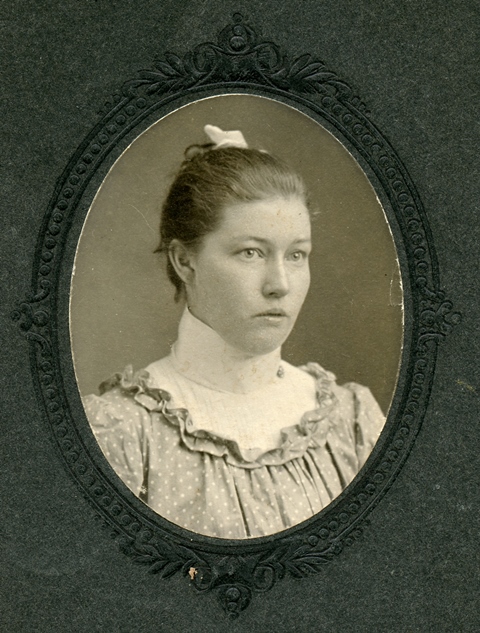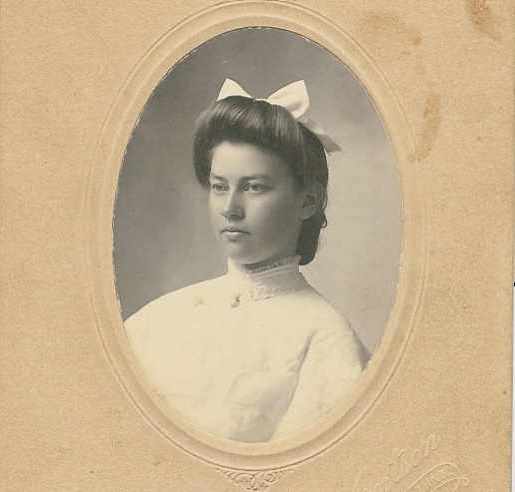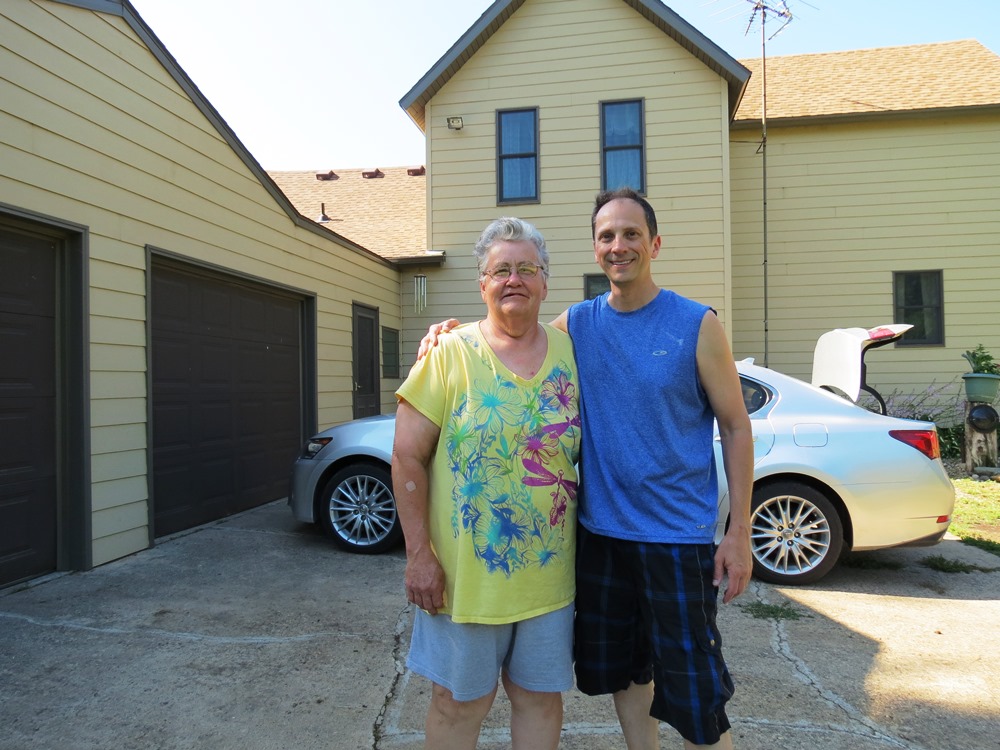| Ancestor 16 (1,000,0): Ole Hansen-Fagerland (1845 – 1927) | Ancestor 17 (1,000,1): Maria “Mary” Johannsdotter-Fagerland (1849 – 1918) | |
| His parents | Their ancestral child | Her parents |
Click here to review Scandinavian nomenclature.
Ole and at least one brother (Jacob) left Norway as young adults in 1866. 1 They left the Fagerland Farm (also known as “Farland”) where they had grown up. This was a long, skinny farm, stretching east-west across the island.
In the US, Ole “worked in Iowa and Wisconsin two years, and in the fall of 1869 came to Minnesota and worked two years in Chippewa county, then took a claim in Stony Run township” in Yellow Medicine County. 2 I don’t know if he and Jacob stayed together the whole time, but I would imagine that they did. They ended up on adjacent plots of land in Stony Run.
In the 1890s, Ole’s name reverted on records from “Ole Hanson” to “Ole Fagerland”. As a genealogist, I had been searching for Ole Fagerland and could find no trace of him before 1900 until this matter came to my attention in the 2010s. Ole’s children are named “Hanson” on their birth certificates but went by “Fagerland” in everyday life.
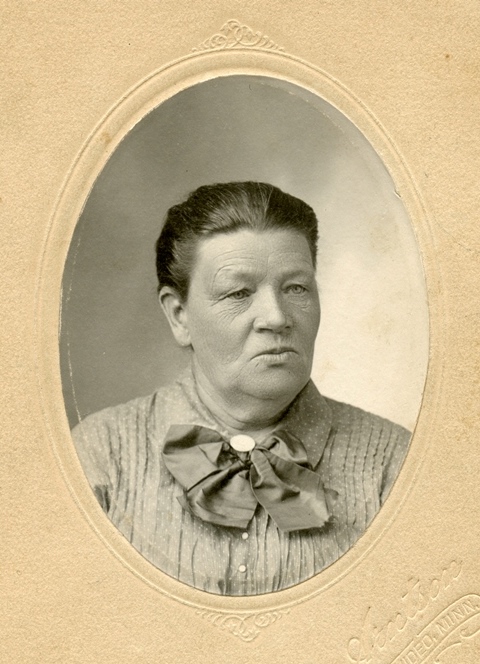
Mary came of age in St. Peter (Nicollet County) Minnesota. 3 When her son Knut compiled his family tree, Knut recorded Mary’s maiden name as “Mary Anderson” because her father’s name was John Anderson and Knut only knew the 20th century system. In reality, though, her maiden name had been Mary Johannsdotter.
Ole and Mary were married in St. Peter around November, 1869 4 and took up residence on Ole’s land. I do not know the circumstances of how or where they met.
Ole and Mary had four children – Hannah, Lisbeth, Martin, and Knut – between 1872 and 1878. All four of them died in the diphtheria epidemic of 1879 – ’80! 5 This is the kind of drama that we can sometimes pick out of objective genealogical data. It’s impossible to imagine the grief of two young parents losing their 2 – 7 year-old children all in one winter. They started their family all over again. As was customary in those times of high child mortality, they used the same names for the second set of children! The new Hannah, Knut, Elizabeth, and Martin were born in the 1880s and ‘90s, and this time all of them survived. There was actually one more infant death in the family, a daughter named Katherine who only lived from 1889 – ’91.
The couple spent most of their lives, four decades, at that homestead in Stony Run. The land of “Ole H. Fagerland” is shown on this Yellow Medicine County map dated 1913. Ole’s brother Jacob or “J. H. Fagerland” was another nearby landowner.
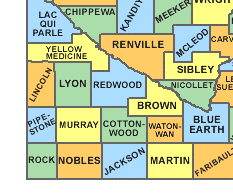 | 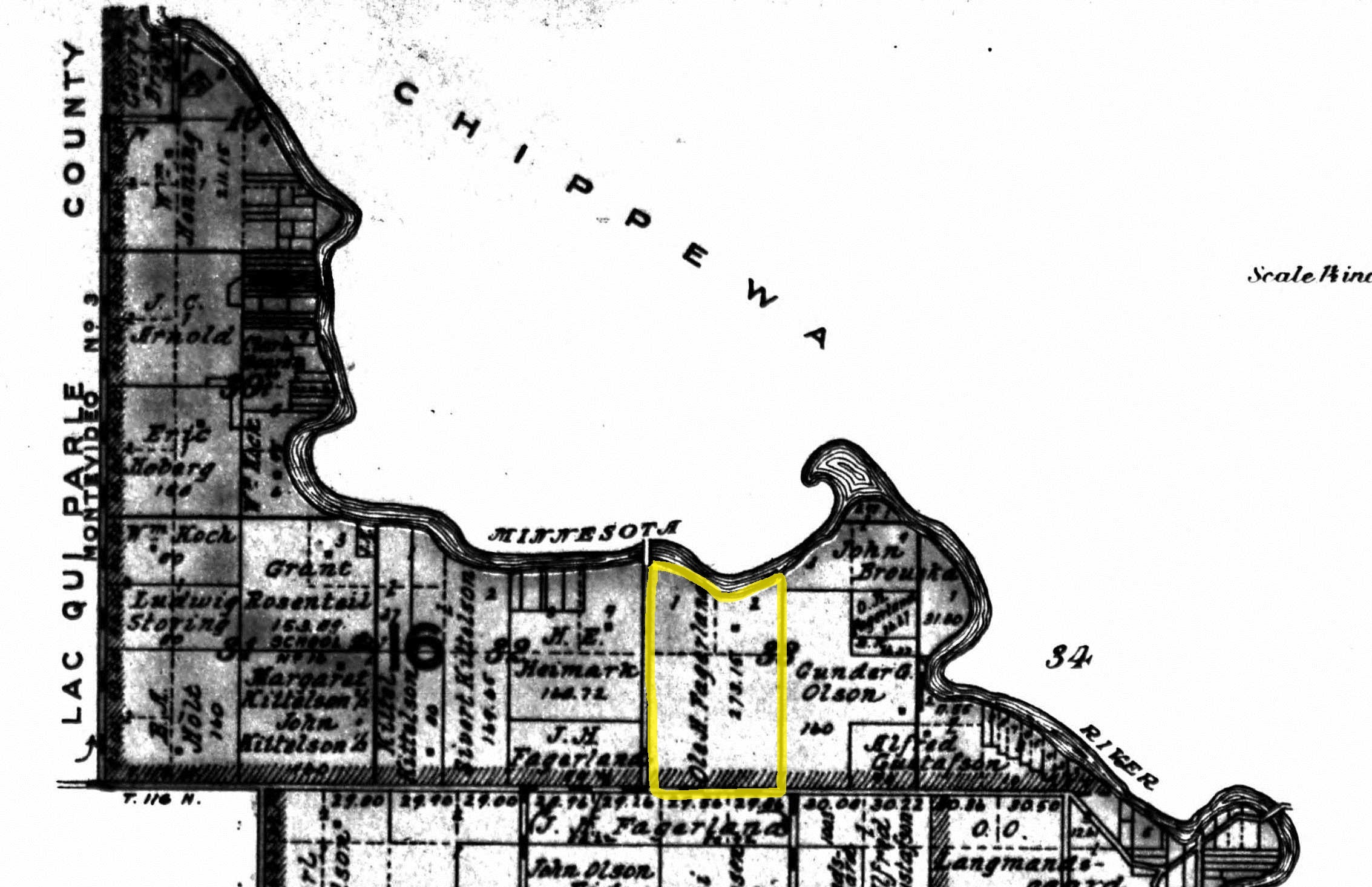 |
| The counties of Southwestern MN | Northeastern Yellow Medicine County with Ole’s land highlighted. Click for larger image. |
In the 1910s with an empty nest, Ole and Mary relocated to North Dakota to live with Knut. Mary died in 1918, before Grandpa was born. Grandpa says of his grandfather, “I remember him living upstairs as an invalid,” but that’s all he can recall. Ole died in 1927 when Grandpa was only four.
Grandpa’s older siblings had some recollection of their grandfather Ole. In 2003, Grandpa wrote a memory book with his living siblings. He wrote:
“Harris remembers our Grandpa Ole teaching him how to split wood with a hatchet. He was probably about five at the time. ‘He also taught me how to say <<puss du>> (sp?) meaning, <<be careful now.>> ‘ “6
In 2014, I met Grandpa’s older brother Orville. I asked him if he remembered anything about his grandfather. Orville had an amusing characterization of Ole. “Every time I saw him, all he ever did was patch the barn.” Apparently, Ole was a farmer / carpenter. Orville didn’t know him well either, but “Everyone said he was real easy-going.” I asked him what he knew about Mary, who died when Orville was only two. He thought for a second and said, “Nobody ever talked about her much.”
Grandpa offered some recollections of his uncles and aunts, Ole and Mary’s children, in their later years. It seems it was never a close-knit family.
“We sort of lost contact with Elizabeth and Martin. I was led to believe that Elizabeth just dropped out of sight and no one knew where she was. In later years some photos of her and some family showed up. It developed that she had a life of her own. The rumor was that she had a falling out with Knut over the inheritance of their father’s land in Minnesota. 1 In Martin’s case, he was kind of a loner. He lived with us for a while, I think my mother didn’t want him around her teenage daughters. In later years he stayed with Harris and Ellen for a while, then got a small house in Noonan.
“Hannah’s son Reuben fell ill to diabetes at probably about age six. Hannah’s husband Otto couldn’t handle it and committed suicide. Reuben and Hannah lived in their small farm house. When she passed away, he lived alone and died at age 41. Sad story. He and Harris were good buddies.” 7
Thus, Martin’s and Hannah’s lines of descent have died out. I met Elizabeth’s granddaughter, Darlene Konz, in 2015. She’s the one who had that picture of Elizabeth, and she had a picture of Mary too! Due to the strange family history, Darlene didn’t even know that Mary was her own great-grandmother until we met. Mary was identified by Grandpa, who remembers seeing pictures of her when he was a kid. Darlene related the memories of her mother Hazel, Elizabeth’s daughter. Elizabeth never talked about her birth family, so nobody knew anything about that side of the family except the Fagerland name. Hazel only remembered one moment in her childhood when Elizabeth took a train and went west to North Dakota for a Fagerland funeral. That was most certainly Ole’s funeral. Ole and Mary are both buried in Noonan alongside Knut.
The Fagerlands’ farm in Minnesota was passed on to Hannah and Knut; I don’t know what happened to it after that.
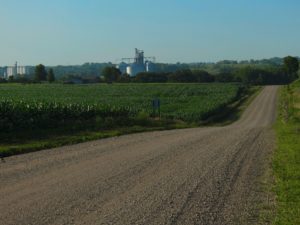
Testing: Edit made 3/27/21, 12:55 AM
Endnotes
- See 1900 census. ↩
- History of the Minnesota Valley, including the Explorers and pioneers of Minnesota (North Star Publishing Company, Minneapolis, 1882), quoted at http://www.rootsweb.ancestry.com/~mnyellow/82hist58.htm (accessed 5/25/15). ↩
- See Mary’s obituary. ↩
- See marriage certificate. ↩
- Fagerland-Morrical, Deloris, The Fagerland Family, 1976, unpublished, p. 18. ↩
- Fagerland, Warren, As I Recall, 2003, unpublished, p. 12. ↩
- Fagerland, Warren, email to me, 8/01/14. ↩
